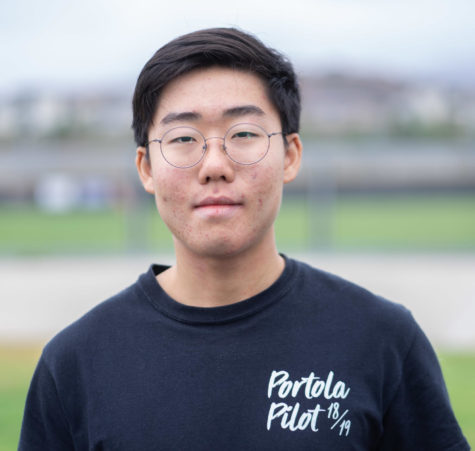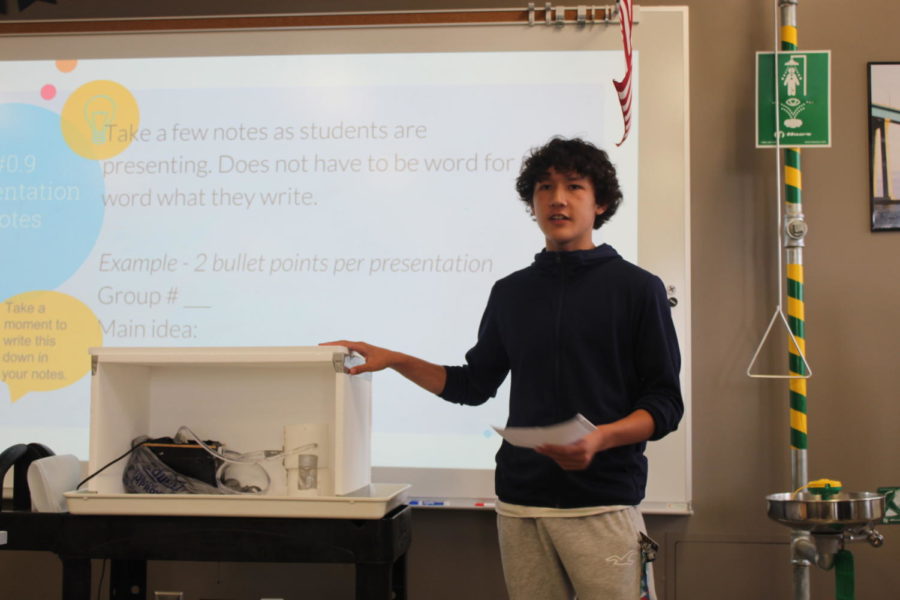Creating Chemistry in the Food Banks
Sophomore Eaden Haresco describes his group’s hydro-refrigeration model.
Sophomores presented their Food Bank Think Tank projects in their chemistry classes on Nov. 2-3. Using their chemistry knowledge, groups designed their own driving questions and worked on finding an innovative solution in an effort to improve food banks.
“The main purpose of the food bank project was to have our students apply the content and the knowledge that we are learning in class to something outside in the community,” science teacher Jeralyn Jelnick said.
Groups researched various energy problems in food banks, such as waste and inefficiencies. Then, they created projects around the topic of energy to solve the problems. Some students visited local food banks for accurate data and valuable first-hand experience.
“I lived in Irvine for quite a while, but I never knew how it worked. Visiting the food bank gave me an opportunity to meet and hear new people and recognize that the community is very warm and nice,” sophomore Julia Lee said.
After the research and planning, students presented their solutions through media such as models, infographics and videos. Some creative students decided to take a risk by using an innovative medium to display their solutions.
“We made a Minecraft world and built a farm, a factory, a market and a house to show food and the energy contained in food going from the farm to the table,” sophomore David Jang said. “The virtual world allowed us to make and do whatever we wanted.”
In the end, the Food Bank Think Tank reminded students to always give back to the community because opportunities are everywhere, even in the chemistry classroom.
“We hope that students are walking away with more knowledge about the food banks and what is going on in their community,” Jelnick said.
Your donation will support the student journalists of Portola High School. Your contribution will allow us to purchase equipment and cover our annual website hosting costs.

Ki Joon Lee is your 2019-2020 Sports Editor. On his third year with the Portola Pilot, he is excited to deliver sports news and feature amazing Bulldog...




